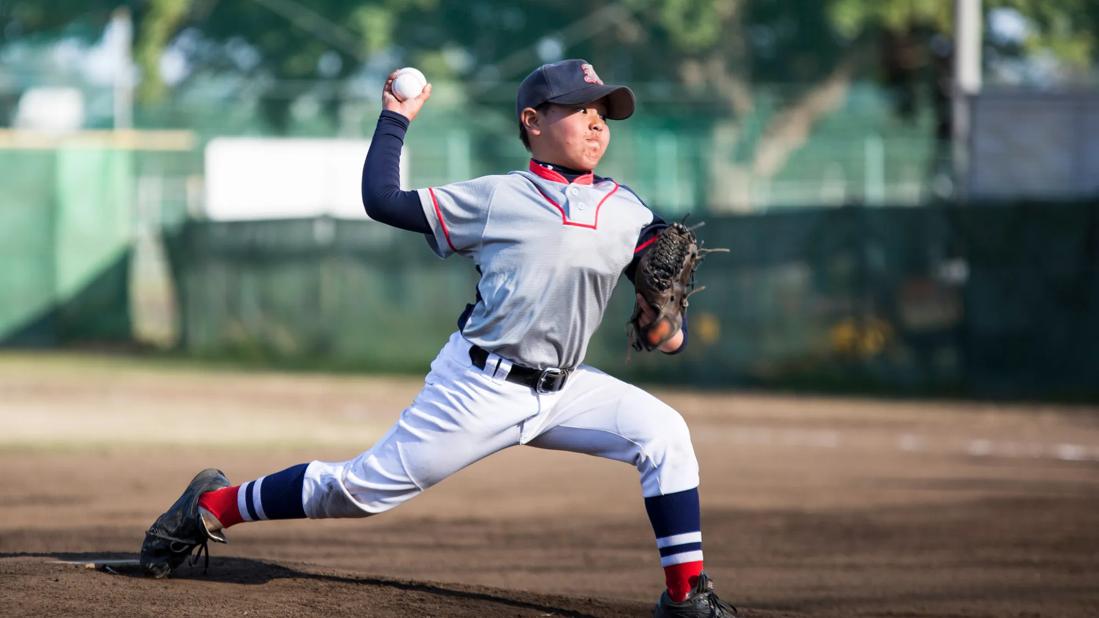It’s important to take time off to limit wear and tear

Young athletes who specialize in a single sport often view their intense training as a roadmap to excellence. That physical workload, however, often leads to another destination — a doctor’s office.
Advertisement
Cleveland Clinic is a non-profit academic medical center. Advertising on our site helps support our mission. We do not endorse non-Cleveland Clinic products or services. Policy
Overuse injuries account for more than 50% of medical visits by young athletes. Study after study finds that children who focus on a single sport with demanding year-round training put themselves at greater risk of getting hurt.
“You have kids who live, sleep and breathe a sport — and they’re paying a price,” says orthopedist and sports medicine specialist Paul Saluan, MD.
Here’s how to avoid that cost.
An overuse injury results from repetitive stress over a period of time. Basically, do something once — like throw a baseball — and your body barely notices. But do it 10,000 times and wear and tear develop.
With their singular activity focus, one-sport athletes place an immense amount of stress on specific joints. Knees, shoulders and elbows top the list, says Dr. Saluan.
The intensity level that accompanies many year-round training programs also drives up the risk of injury. Put simply, many young athletes push harder for longer without giving their bodies time to recover.
Physical breakdowns seem almost inevitable in that scenario, notes Dr. Saluan.
Other factors in overuse injuries include:
Advertisement
Issues linked to conditioning have grown with COVID-19, which created irregularities in many training schedules. Athletes are more prone to injury when they push to return to high levels of performance too quickly following a layoff or interruption.
“We worry that young athletes will try to make up for lost time and get in as many reps as possible,” says Dr. Saluan. “You can’t just jump in where you were. There’s a process that needs to be followed to build back up.”
Certain sports lend themselves to overuse injuries, says Dr. Saluan. Here’s the roster, along with common injuries:
Young athletes need to listen when their body communicates through pain and soreness, says Dr. Saluan. What seem like small problems can quickly blossom into more serious injuries if ignored.
Any athlete experiencing joint pain during an activity or recurring stiffness afterward needs rest. Swelling or loss of motion also represent serious warning signs for children.
Trying to push a young athlete through an overuse injury can lead to long-term damage. Joint degradation at an early age can set the stage for arthritis and chronic tendonitis years in the future.
“Pain is not something that should be tolerated in young athletes,” says Dr. Saluan. “It’s a call for attention.”
The best defense against overuse injuries can be summed up in three words: Take time off.
A three-month break is recommended for young athletes focused on a single sport, says Dr. Saluan. Stepping away from the activity allows the body — specifically, overtaxed joints and muscles — time to recover.
To be clear, though, the recommendation for a “break” isn’t a challenge to log 90 consecutive days on a couch. “Keep moving your body,” says Dr. Saluan. “Just move it differently.”
That means switching things up. If you’re a runner, maybe try swimming for a bit to lessen the pounding on your knees and ankles. (Vice versa, too.) Or just dedicate a few months to full-body weight training.
In the old days, that happened naturally as young athletes moved from sport to sport with the seasons, says Dr. Saluan. The pattern minimized overuse injuries because different activities work different areas of the body.
Advertisement
Basically, the transition from football or field hockey in the fall to basketball, swimming or wrestling in winter to baseball or softball in spring kept specific joints from being used the same way all year.
“By focusing on just one sport, the concern is that these young athletes are accelerating joint degradation,” says Dr. Saluan. “There’s a fine line between being active and healthy and overdoing it.”
Self-awareness is critical for athletes to avoid overuse injuries. Knowing when something feels off and — more importantly — taking steps to address it is key to staying healthy and in the lineup.
“The best way to deal with an overuse injury,” says Dr. Saluan, “is to stop it before it happens.”
Advertisement
Learn more about our editorial process.
Advertisement

Most recommended precautions center around minimizing bruising or swelling

Even one drink can have an impact on your cognitive function leading to slurred speech, blurred vision and impaired memory

Understand who may (and may not) benefit

Lorem ipsum dolor sit amet. Et odio Quis vel ipsam omnis eum alias deleniti et placeat impedit non voluptas galisum hic autem enim et cupiditate aliquid. Est beatae quidem non facilis autem ut commodi nisi aut tempore rerum et dolores voluptatem cum enim optio id sapiente quasi. Ad laboriosam officiis 33 cupiditate sequi ea voluptatum consectetur qui necessitatibus voluptate et quasi doloremque et facere explicabo quo explicabo officia

Seeking help through therapy can be an important step in improving your quality of life when you have UC

Type 2 diabetes isn’t inevitable with these dietary changes

Applying a hot or cold compress can help with pain